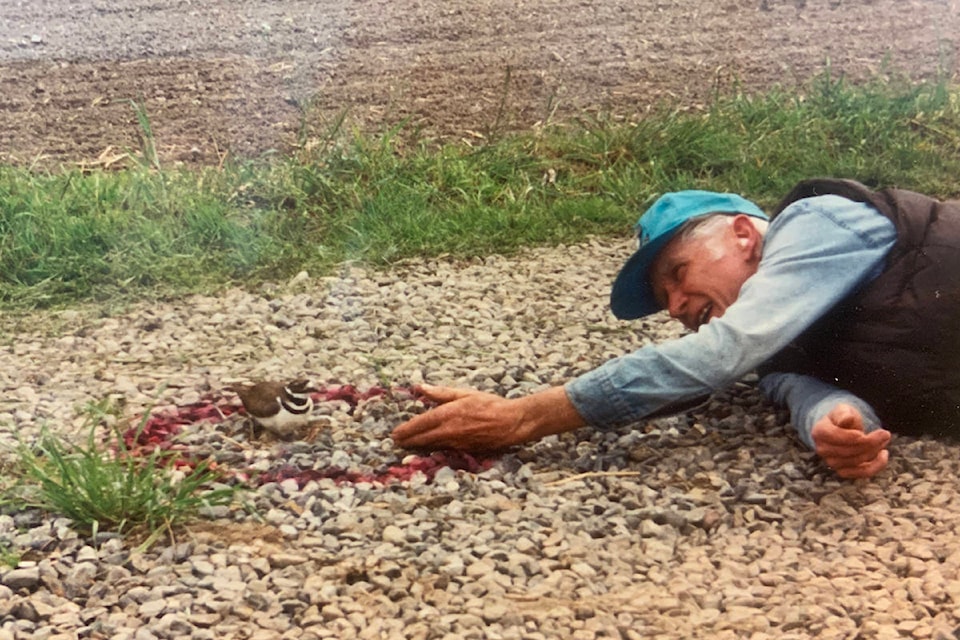Joe Sommer has been watching wildlife pass through his 34-acre farm in rural Chilliwack for 55 years.
Deer, coyotes, and every local bird species, to name just a few. One of those that reappear every year are the killdeer, a smallish brown, black and white bird.
Sommer is used to seeing them, and knows their nesting habits. Unlike other birds that build nests in trees and other hidden spots, killdeer plunk down on gravel and rock beds that have similar colours to their own eggs. They like wide-open spaces, and are found in farm fields, gravel rooftops, golf courses, pastures and even airfields.
They also love to eat the same bugs that habitate farm fields, mainly those that farmers see as pests.
This year, a killdeer couple has chosen to nest right along Sommer’s property edge to a neighbouring farm.
“They pop them down anywhere,” Sommer says with a laugh. And this year, they are letting him get close. He came into The Progress to show a photo taken where his hand is just inches away from the nesting bird. He had painted a bright red circle around the nest, letting his neighbours know it was there and to watch out for it.
Killdeer lose just over half their eggs to predators.
Sommer is just hoping to protect his nesting killdeer family over the coming weeks.
The website Hinterland Who’s Who describes how to identify a killdeer nest.
“The female lays four or, very rarely, five pear-shaped eggs, which are large and blunt at one end and pointed at the other and average 36.5 by 26.5 mm in size. The eggs are pale buff, irregularly spotted, blotched, or scrawled with blackish-brown or black, and always neatly arranged in a circle with the pointed ends turned inwards.”
Their shallow scrubby nests are also lined with pebbles, broken grass stems, and limestone or wood chips, the website states.
They are not endangered, and are common across North America.
READ MORE: Chilliwack girl loses driveway masterpiece to Mother Nature, with video
@CHWKcommunity
jpeters@theprogress.com
Like us on Facebook and follow us on Twitter.
Want to support local journalism during the pandemic? Make a donation here.
